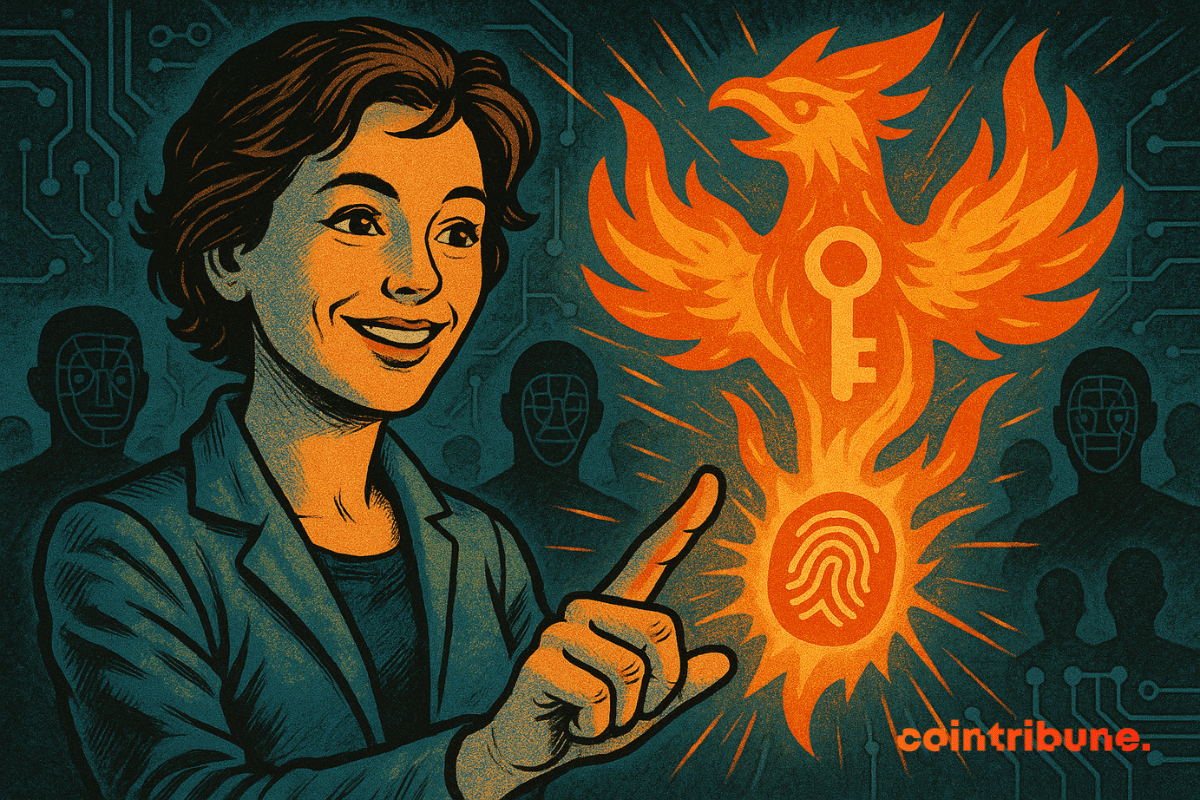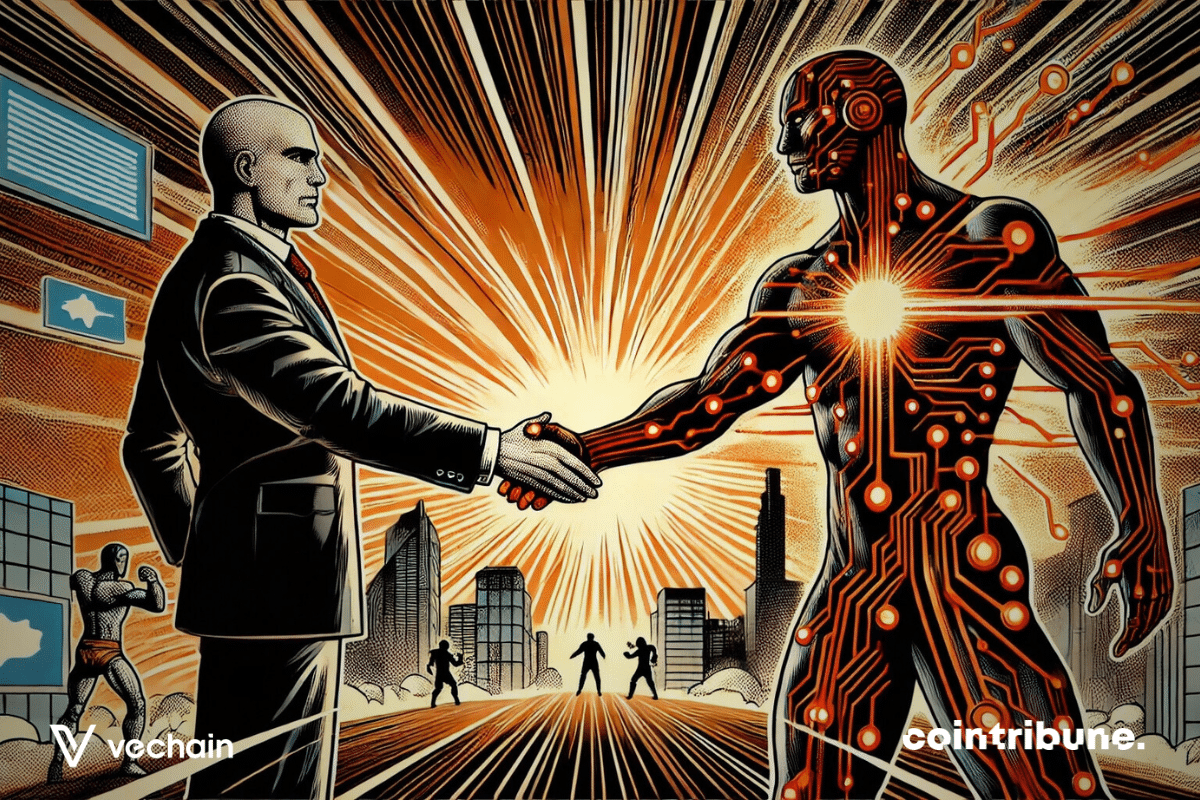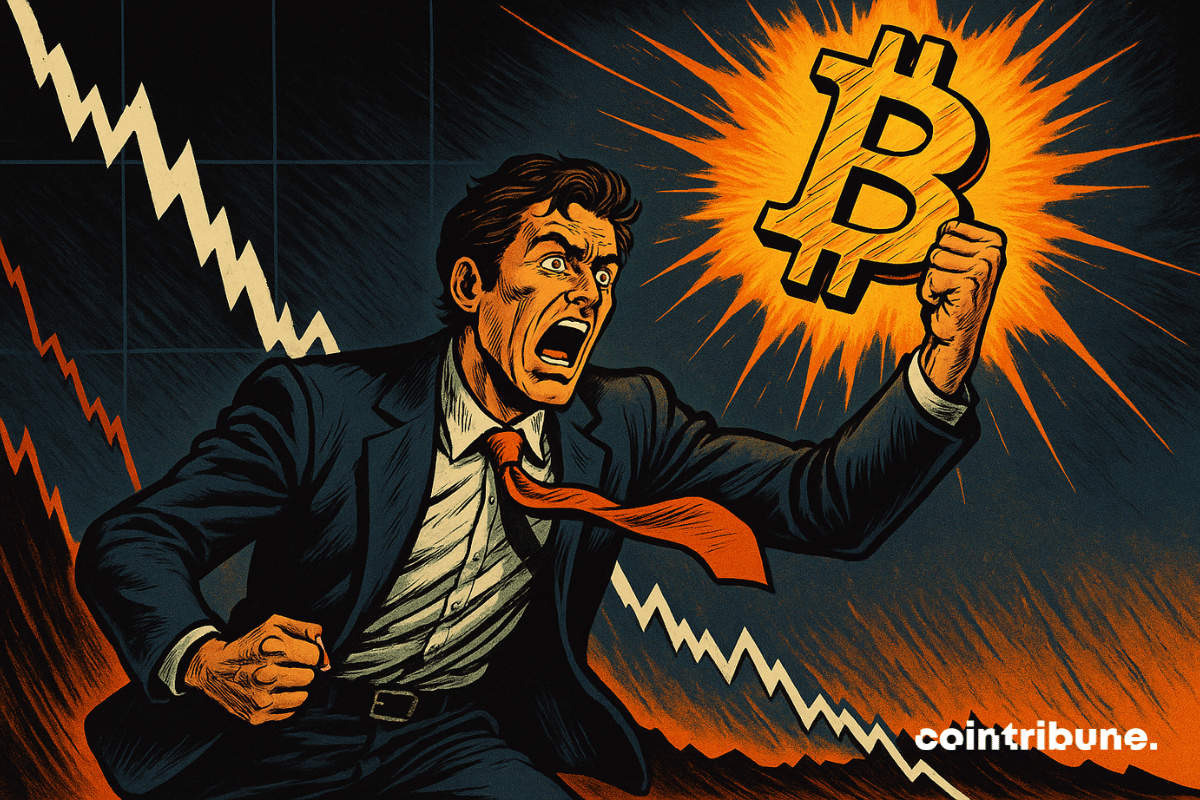While the old hands cash in their winnings, Bitcoin is performing acrobatics: it wobbles, balances, and might even leap. The suspense continues, hats off to the moles.
In a market searching for benchmarks, even the slightest regulatory rumor can tip the scales. XRP is a perfect illustration of this: trapped between $2 and $2.35, the asset is drawing increasing attention amidst speculation surrounding an ETF. Far from the usual tumult surrounding bitcoin, this tension places Ripple's crypto at the convergence of a double issue: technical unlocking and institutional recognition.
While markets were expecting a clear monetary shift in 2025, Jerome Powell, the chairman of the Federal Reserve, dampened hopes by pointing to an unexpected culprit: Trump. Yes, Donald Trump, back in the White House since January, is leaving his mark on the American economy, to the point of forcing the Fed to play for time. In a context where every word matters, Powell dropped a diplomatic bombshell, accusing Trump's policies of blocking interest rate cuts.
Bitcoin shows $1.2 trillion in unrealized profits. Why is no one selling despite +125% gains? Analysis of the signals to know.
The European Central Bank is embarking on a major technological shift. The Governing Council has just approved two major projects aimed at integrating blockchain technology into the euro transaction settlement system. This is a strategic advancement that marks a turning point in the modernization of the financial infrastructures of the European Union.
Less than 15% of bitcoins are still accessible on exchanges. Behind this figure lies a silent dynamic: the scarcity of liquid supply. As institutions appropriate the asset, analysts see it as a signal of an increasing imbalance between available stock and strategic demand. A shift is looming in the mechanics of the market.
The crypto ecosystem takes a symbolic leap with the accelerated validation by the SEC of the conversion of the Grayscale Digital Large Cap Fund (GDLC) into an ETF. This green light is not limited to Grayscale. It marks the entry of altcoins into the regulators' field of action. In a context where the political climate is softening towards cryptos, this decision could pave the way for a new generation of ETFs focused on assets like XRP, Solana, or Cardano.
Trump exults, Warren rises up, Lummis screams into the wilderness... The Senate votes, cuts through, carefully avoids crypto, and signs a XXL law, as silent as it is deafening for digital miners.
The world of crypto is often built on the fringes of institutions. However, some companies choose to swim against the tide by seeking to fully integrate into them. This is the case with Circle, the issuer of USDC, which is no longer content to be just a tech player. The American company has officially applied to become a national trust bank in the United States. This is both a bold move and indicative of a broader shift in the crypto ecosystem: integration into the federal banking system to better ensure trust.
Musk is pumping 10 billion dollars into his AI circuits, while Trump fumes, threatens to cut off the taps... and discovers that AI doesn't like public debt.
Bitcoin’s price holds steady while traders shift from buying puts to selling calls, signalling growing confidence amid rising institutional demand and hints of a possible breakout later in the year.
Crypto ETPs attracted $17.8B in H1 2025, nearly matching 2024 levels, driven by strong institutional demand and Bitcoin’s lead.
At a time when DeFi is reinventing uses through groundbreaking innovations, certain trends are literally exploding. In this technological cacophony, RWA — these tokenized real-world assets — are tracing a stunning trajectory: +260% by 2025, for a market of 23 billion dollars. Behind this figure lies a promise: that of tangible, stable returns, grounded in the real economy. A remedy for crypto volatility, a bridge to the traditional world. "Real yield is the new grail," insiders are already whispering. And at the heart of this rise in power, Credefi is quietly laying out its game.
Pi Network is entering an unstable period. On July 4th, a massive influx of tokens will inflate the available supply in an already pressured market. After declining for six days, the PI cryptocurrency is struggling to convince, especially since the announcements from Pi2Day left investors wanting more. Between community disappointment and upcoming tensions, the project has a lot at stake in the coming days.
It had been a long time since Bitcoin miners had been caught off guard by such a mining difficulty adjustment.
Blockchain holds great promise, but few projects can bridge the gap between technological ambition and institutional reality. With its new ACE compliance engine, Chainlink aims to overcome this hurdle. The stated goal: to unlock $100 trillion in institutional investments that have been stalled by regulatory barriers. An initiative that could change the game in the crypto universe.
The BIS stands up to defend the Fed. Can the economy withstand a monetary crisis? The details in this article!
When bitcoin ETFs are making numbers like never before, investors are jigging while Wall Street rediscovers crypto, their eyes fixed on curves that rise steadily.
Michael Saylor and Adam Back have just unveiled a bold roadmap to propel BTC to 3 million dollars. Their model aims to transform traditional businesses into ultra-efficient bitcoin acquisition machines.
Robinhood opens a new chapter in its history by launching its own layer 2 blockchain to offer tokenized stocks to European investors. This technological offensive places Europe at the center of its crypto strategy: allowing investors from the Old Continent to trade American stocks 24/7, without commission. An advancement that could well reshuffle the cards of traditional trading. Analysis.
While Bitcoin and Ethereum are cautiously progressing in a calm market, it is Solana that is stealing the spotlight. In just one week, its price has soared by 16.5%, eclipsing the performances of the two historical pillars. This breakthrough is not trivial: it comes in the context of a return to fundamentals, where investors are once again scrutinizing technical signals and the robustness of projects. Solana, long relegated to the background, now seems to be repositioning itself as a serious contender for leadership in the next cycle.
The BNB Smart Chain is accelerating and scaling up. Since June 30, Binance's blockchain has been processing a block every 0.8 seconds thanks to the Maxwell update, a technical leap that brings it closer to the fastest standards in the industry. Behind this evolution is a clear objective: to remain competitive in the intensifying race for performance in DeFi. In an era where every millisecond counts, the BNB Smart Chain asserts its determination to dominate a Web3 where speed conditions adoption.
While the markets hesitate, Saylor is accumulating bitcoins by the thousands. Another 4,980 units? At this rate, it's the FED that will end up calling him.
Ultra inaugurates a new era of Web3 gaming with the launch of the closed community Alpha of EMPIRES, an economy-focused strategy game developed by its in-house studio, Black Ice Studios. Much more than just a game, EMPIRES serves as a foundational brick of the Ultra ecosystem, where players do not just play: they own, influence, and shape a multi-game universe.
As the second quarter comes to a close, Bitcoin may well be writing a new chapter in its history. The $109,000 mark is within reach, and the technical signals are converging. However, behind this bullish momentum, tensions are emerging: a demand deficit, liquidity games, and uncertainty about American interest rates. Could the June monthly close change everything?












































